You’re Wearing Your Throat Guard Wrong ~ How to Fix It
Jan 29th, 2020TO WEAR OR NOT TO WEAR
Some umpires say, "you don't need a throat guard" because the mask extension, or "rake", is long enough to cover the throat.
While this is generally true for balls that come in straight, it is not true for balls that are deflected at an angle. Most balls that are deflected are those that bounce first in the dirt. A foul ball from a low pitch or deflection off the catcher can also happen.
First, understand a basic principle of throat guards for umpires. The throat guard will reduce, but not eliminate, the natural gap between your guard and chest protector that occurs while you are in your umpire stance.

The main objectives of the throat guard are to minimize that gap and to deflect the force away from your throat and to your chest protector.
So, YES! IF YOU ARE AN UMPIRE, YOU NEED A THROAT GUARD!
Why You're Wearing it Wrong
The problem with throat guards is that umpires make up to 2 critical mistakes. These mistakes either make the throat guard ineffective, or worse, cause injury.
The 2 mistakes are:
- Attaching it on the wrong bar
- Not choosing one long enough
Let's discuss how to fix these 2 issues.
Attach to the Correct Bar
First of all, the mask on the left in the photo below shows how NOT to attach your throat guard to your umpire mask. If you were a catcher, you would wear it dangling at the bottom like this.

As an umpire, you'd want to attach it to the bar one up from the bottom.


There are 2 reasons why the bar one up from the bottom is better (besides it looks better and flops around less).
- There is a bigger gap if you put it on the bottom bar because umpire mask extensions jut outward by nature.
- If you get hit while the throat guard is on the bottom part, the slack from the attachments could slide up the outer bars and collapse inward.
This could cause the top of the throat guard to hit your throat with the full impact of the baseball or softball behind it.
Note: the video below does a much better job explaining this.
Make Sure It's Long Enough
When hit by a ball, you want your throat guard to be long enough, so your throat guard hits your chest protector, NOT your throat.

The 6” has a better chance of doing that, in most cases, than the 4”. However, the 4” might suffice depending on your stance.
How to check:
- Put your throat guard on your mask.
- Wear your chest protector.
- Find a mirror or have someone help you.
- Get in your stance.
- Move the throat guard inward.
If the throat guard misses your chest protector and touches your throat, it is NOT long enough. If it does, your throat guard can protect you. You are good to go.
Watch the video below for more details & spread the word.
Video
Crew How-To: Properly Attach Your Umpire Throat Guard
Jim explains & Ty shows you how to properly size & attach the umpire throat guard for best look and to prevent injury.
Related Articles
- The Ump Eye: An Eye on All the Action
- Best Lightweight Umpire Mask - Ranked by Weight
- Proper Positioning for Throat Guards on Umpire Helmets
- Jim Goes Parental with Umpire Cap & Bill Length Warning on Umpire-Empire Post
- Why the NOCSAE Standard Doesn't Help Umpires / Follow These 5 Steps Instead
- Watch Jim Kirk’s Webinar on ‘Uniform & Safety’ for British Baseball Federation & European Umpires
- Injury Prevention & Recovery: The Essential Umpire Safety PSAs
- How-To Make Excess Shoelaces Disappear into NB Plate Shoes
- Calling Balls/Strikes from Behind the Mound? Follow an Easy Safety Tip
About the Author
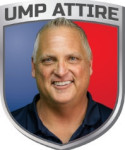
President Jim Kirk
Jim is a leading expert, educator and author on umpire gear, safety & appearance. After playing baseball at Centre College, he worked as a high school umpire. He became involved in E-Commerce while working on an MBA in the early 2000s and bought Ump-Attire.com in 2006, He eventually led it to the leading umpire gear & attire retailer worldwide, a “Best Places to Work in Louisville” honor in 2020, 2021, 2024, and a National Association of Sports Officials (NASO) Preferred Vendor. He maintained a long-standing relationship with Minor League Baseball Umpire Development & Training Academy for 10 years. He serves as an adviser to UMPS CARE Charities, the charity of MLB umpires, served as a 2-term board of director from 2012-2018, and was named their 2015 Ambassador Award recipient. A supporter since the inception of the Wounded Warrior Umpire Academy, he was named to their Board of Directors in 2020.
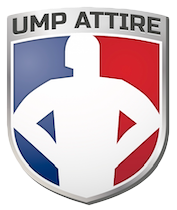
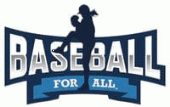

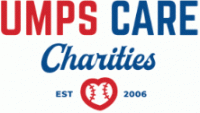

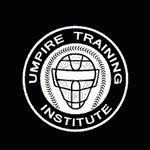
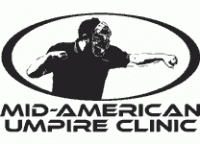

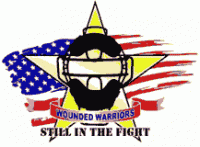

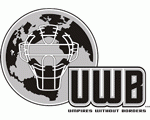
Comments
Very useful information about the throat guard here, Ump-Attire.com. Safety first; that means ours as well as everybody else's at the ballpark. Making sure conditions are safe for the players and spectators, and keeping ourselves safe from injury out (or back) there is our sacred charge as umpires. This article reminds us that close attention to the safety factor should never be neglected. Thank you for that. Now, could you do one about the proper way to wear a chest protector? I've worked with plenty of umpires (and seen far too many catchers, particularly young ones) who wear their's improperly. The protection that a chest protector is supposed to offer, particularly around the upper sternum/neck area, becomes useless if it's not worn properly. Your fine work making these videos is greatly appreciated!
- Comment by Perry Barber
- Mar 3, 2020
ReplyWhat mask is being used in the video?
- Comment by Joel Harthoorn
- Jan 28, 2020
ReplyTy is demonstrating using the Wilson Silver Dyna-Lite Aluminum Umpire Mask with Memory Foam Pads (A3009-AL-SV).
- Comment by Ump-Attire.com Staff
- Jan 28, 2020
Reply